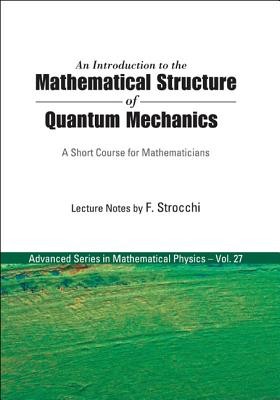
- We will send in 10–14 business days.
- Author: Franco Strocchi
- Publisher: World Scientific Publishing Company
- Year: 2005
- Pages: 146
- ISBN-10: 9812564314
- ISBN-13: 9789812564313
- Format: 8.7 x 23.3 x 1.5 cm, kieti viršeliai
- Language: English
- SAVE -10% with code: EXTRA
Introduction to the Mathematical Structure of Quantum Mechanics, An: A Short Course for Mathematicians (e-book) (used book) | bookbook.eu
Reviews
Description
This book arises out of the need for Quantum Mechanics (QM) to be part of the common education of mathematics students. Rather than starting from the Dirac-Von Neumann axioms, the book offers a short presentation of the mathematical structure of QM using the C--algebraic structure of the observable based on the operational definition of measurements and the duality between states and observables. The description of states and observables as Hilbert space vectors and operators is then derived from the GNS and Gelfand-Naimark Theorems.For finite degrees of freedom, the Weyl algebra codifies the experimental limitations on the measurements of position and momentum (Heisenberg uncertainty relations) and Schroedinger QM follows from the von Neumann uniqueness theorem.The existence problem of the dynamics is related to the self-adjointness of the differential operator describing the Hamiltonian and solved by the Rellich-Kato theorems. Examples are discussed which include the explanation of the discreteness of the atomic spectra.Because of the increasing interest in the relation between QM and stochastic processes, a final chapter is devoted to the functional integral approach (Feynman-Kac formula), the formulation in terms of ground state correlations (Wightman functions) and their analytic continuation to imaginary time (Euclidean QM). The quantum particle on a circle as an example of the interplay between topology and functional integral is also discussed in detail.
EXTRA 10 % discount with code: EXTRA
The promotion ends in 23d.23:16:47
The discount code is valid when purchasing from 10 €. Discounts do not stack.
- Author: Franco Strocchi
- Publisher: World Scientific Publishing Company
- Year: 2005
- Pages: 146
- ISBN-10: 9812564314
- ISBN-13: 9789812564313
- Format: 8.7 x 23.3 x 1.5 cm, kieti viršeliai
- Language: English English
This book arises out of the need for Quantum Mechanics (QM) to be part of the common education of mathematics students. Rather than starting from the Dirac-Von Neumann axioms, the book offers a short presentation of the mathematical structure of QM using the C--algebraic structure of the observable based on the operational definition of measurements and the duality between states and observables. The description of states and observables as Hilbert space vectors and operators is then derived from the GNS and Gelfand-Naimark Theorems.For finite degrees of freedom, the Weyl algebra codifies the experimental limitations on the measurements of position and momentum (Heisenberg uncertainty relations) and Schroedinger QM follows from the von Neumann uniqueness theorem.The existence problem of the dynamics is related to the self-adjointness of the differential operator describing the Hamiltonian and solved by the Rellich-Kato theorems. Examples are discussed which include the explanation of the discreteness of the atomic spectra.Because of the increasing interest in the relation between QM and stochastic processes, a final chapter is devoted to the functional integral approach (Feynman-Kac formula), the formulation in terms of ground state correlations (Wightman functions) and their analytic continuation to imaginary time (Euclidean QM). The quantum particle on a circle as an example of the interplay between topology and functional integral is also discussed in detail.


Reviews